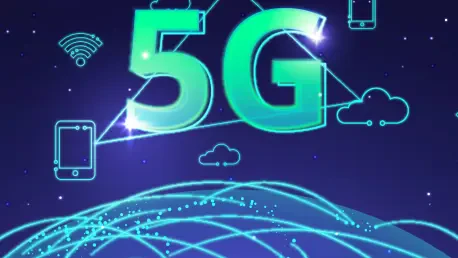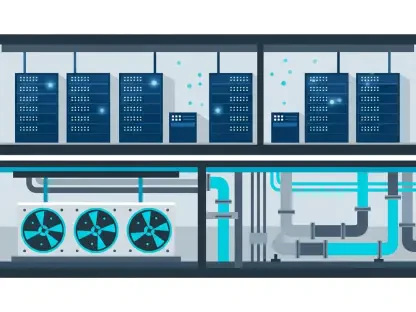I’m thrilled to sit down with Vladislav Zaimov, a seasoned telecommunications specialist with deep expertise in enterprise telecommunications and risk management of vulnerable networks. With years of experience in the field, Vladislav offers a unique perspective on the latest advancements in wireless technology. Today, we’re diving into the recent expanded partnership between a major Japanese telecom operator and a leading Swedish vendor for 4G and 5G network gear. Our conversation explores the goals of this collaboration, the technological innovations driving it, and the potential impact on users and the industry. From regional network upgrades to the integration of AI and energy-efficient solutions, Vladislav will help us unpack what this means for the future of connectivity.
How does a partnership like this one between a major Japanese telecom operator and a Swedish equipment vendor shape the landscape of 4G and 5G networks?
Partnerships like this are pivotal in pushing the boundaries of network technology. They bring together the operator’s deep understanding of local market needs with the vendor’s cutting-edge equipment and innovation. The focus here is on enhancing both 4G and 5G coverage, which means better connectivity for users and a stronger foundation for future digital services. It’s not just about upgrading infrastructure; it’s about creating a more reliable, efficient network that can handle the growing demand for data, especially in densely populated or underserved regions. This kind of collaboration often sets a benchmark for other operators and vendors globally.
What are some of the key objectives behind expanding network coverage in specific regions like northern and central Japan?
The primary objective is to bridge connectivity gaps and meet the increasing demand for high-speed internet in both urban and rural areas. Regions like Hokkaido, Tohoku, and Kanto likely face unique challenges—whether it’s population density in central areas or geographic isolation in the north. By targeting these areas, the operator can ensure more equitable access to advanced services like 5G. It’s also a strategic move to strengthen market presence and customer satisfaction in these regions, which might be critical for business growth and competition.
Can you walk us through how advancements in 5G Standalone technology play a role in transforming user experiences?
5G Standalone, or 5G SA, is a game-changer because it operates independently of 4G networks, unlike earlier 5G non-standalone versions. This allows for lower latency, higher speeds, and the ability to support a massive number of connected devices. For users, this translates to smoother streaming, faster downloads, and more reliable connections, even in crowded areas. For businesses, it opens up possibilities for IoT applications, smart factories, and real-time data analytics. It’s essentially the backbone for the next wave of digital transformation.
How is AI being leveraged to enhance network operations in deals like this, and what tangible benefits might we see?
AI is becoming a cornerstone of modern network management. In this context, it’s used for automation and optimization—think predictive maintenance, traffic management, and real-time adjustments to network resources. For instance, AI can analyze usage patterns to allocate bandwidth more efficiently, reducing congestion during peak times. For users, this means fewer dropped calls or buffering issues. For operators, it cuts down on operational costs and improves overall network reliability. It’s a win-win that makes the network smarter and more responsive.
Energy efficiency is a big focus with new technologies like Massive MIMO. Can you explain why this matters so much to the telecom industry today?
Energy efficiency is critical for both environmental and economic reasons. Telecom networks consume a huge amount of power, especially with the rollout of 5G, which requires more equipment and denser infrastructure. Technologies like Massive MIMO can reduce energy use by up to 35% through smarter design and operation, like dynamically adjusting power based on demand. For operators, this lowers operational costs significantly. On a broader scale, it aligns with global sustainability goals, reducing the carbon footprint of the industry, which is under increasing scrutiny from regulators and consumers alike.
What impact do you think innovations in RAN Compute basebands will have on network performance and user mobility?
RAN Compute basebands are essentially the brains behind the radio access network, handling data processing at lightning speeds. The latest generations, built on advanced architectures, enable faster parallel processing and better data handling. This means networks can manage more users and devices without slowdowns. For user mobility, it ensures seamless handoffs between cell towers as you move, reducing disruptions. Overall, it’s about creating a network that’s not just faster but also more robust and adaptable to real-time demands.
Looking ahead, what is your forecast for the future of 5G and AI-driven network solutions in the telecom industry?
I’m incredibly optimistic about the trajectory of 5G and AI in telecom. Over the next few years, I expect 5G Standalone to become the norm, unlocking new use cases like autonomous vehicles and smart cities that rely on ultra-low latency. AI will continue to evolve, moving beyond basic automation to more predictive and even prescriptive capabilities, where networks can anticipate issues before they happen. We’ll also see tighter integration of edge computing with 5G, bringing processing closer to users for faster responses. The challenge will be balancing these advancements with affordability and security, but the potential to revolutionize how we connect and interact with technology is immense.









